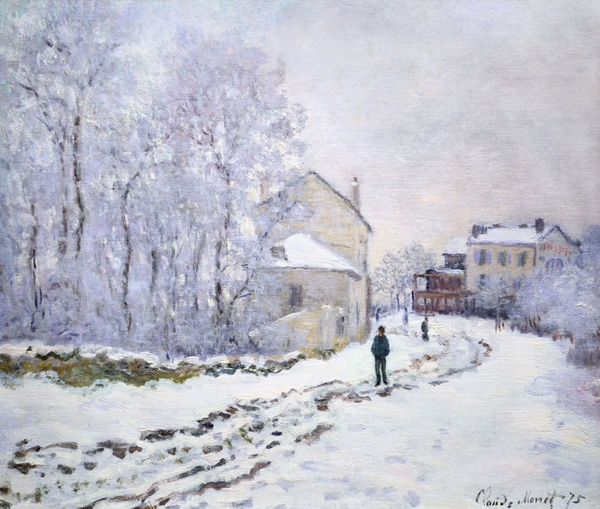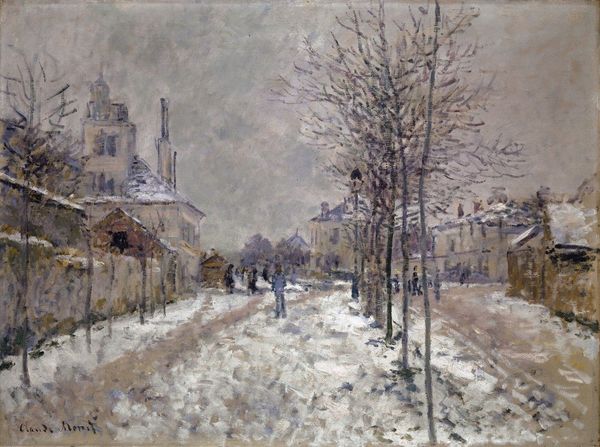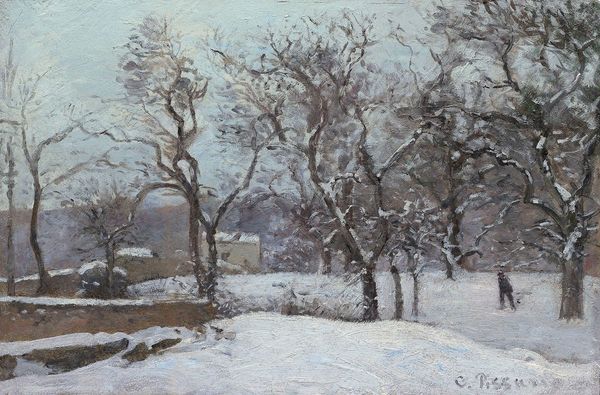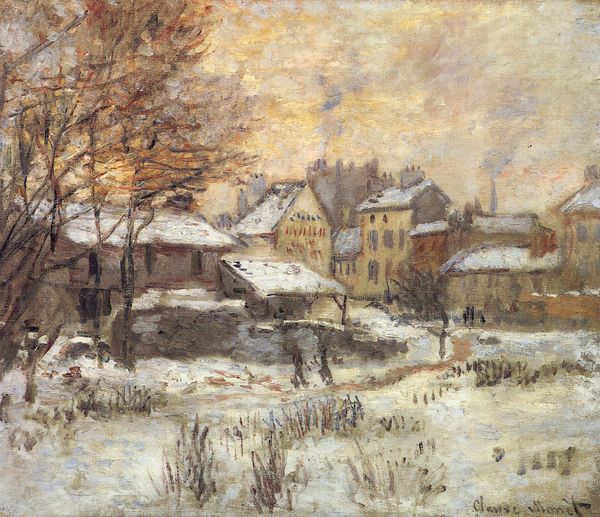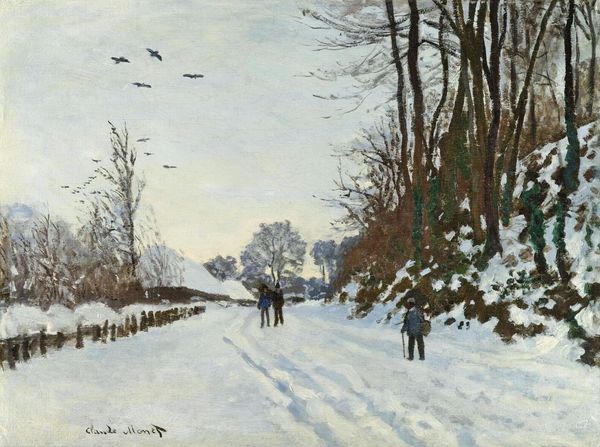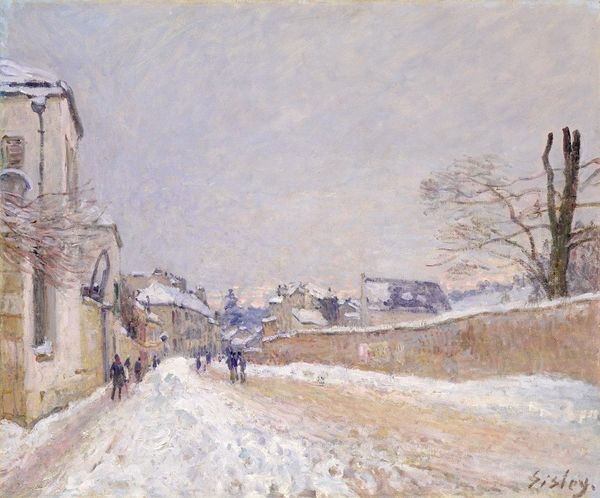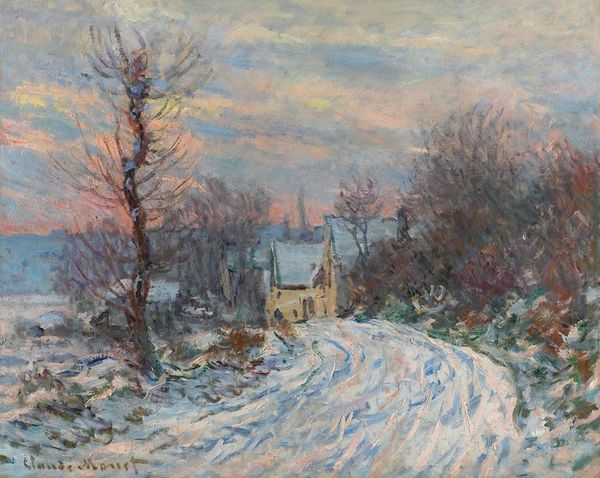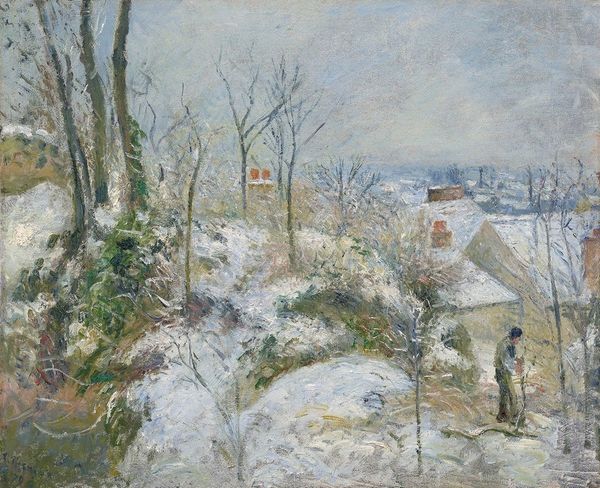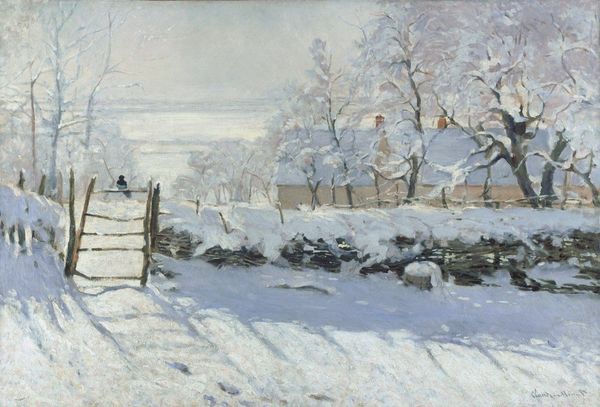
painting, plein-air, oil-paint
#
tree
#
snow
#
sky
#
painting
#
impressionism
#
impressionist painting style
#
plein-air
#
oil-paint
#
landscape
#
winter
#
impressionist landscape
#
oil painting
#
cityscape
Dimensions: 91 x 71 cm
Copyright: Public domain
Editor: So, this is Monet’s “Snow Scene at Argenteuil” from 1875, currently housed at the National Gallery. The heavy impasto and muted colors give it a remarkably somber feel, despite the bright subject matter. What catches your eye in this piece, and how do you interpret it? Curator: The immediate sense of a moment captured is quintessential Impressionism. But I'm more intrigued by what this "moment" *meant* at that time. The 1870s in France were a period of dramatic social and political upheaval following the Franco-Prussian War. What looks like a peaceful winter scene could also be interpreted as representing resilience and recovery after national trauma. Note the figures in the background - are they individuals finding solace, or are they reminders of shared hardship? Editor: That’s a fascinating way to see it. I was focusing on the surface – the brushstrokes, the light. You’re suggesting it's not just about the beauty of the snow, but also about a deeper, collective experience? Curator: Precisely. Think about the rise of Realism and Impressionism within the Salon system – these artists were consciously challenging established academic art, engaging with the “everyday” and, implicitly or explicitly, with the politics of their era. Where was this painting exhibited, and how might that affect how we look at the picture now? Editor: I see, the socio-political context provides an important lens to reconsider not just WHAT is represented but also HOW and WHY. So much for it just being a pretty snow scene! Curator: It highlights the intricate connection between art, artists, institutions, and historical circumstances. This gives a wider consideration than only impressionistic style. Editor: Thank you. This opened my mind to seeing artworks as active players in socio-historical dialogues!
Comments
No comments
Be the first to comment and join the conversation on the ultimate creative platform.
